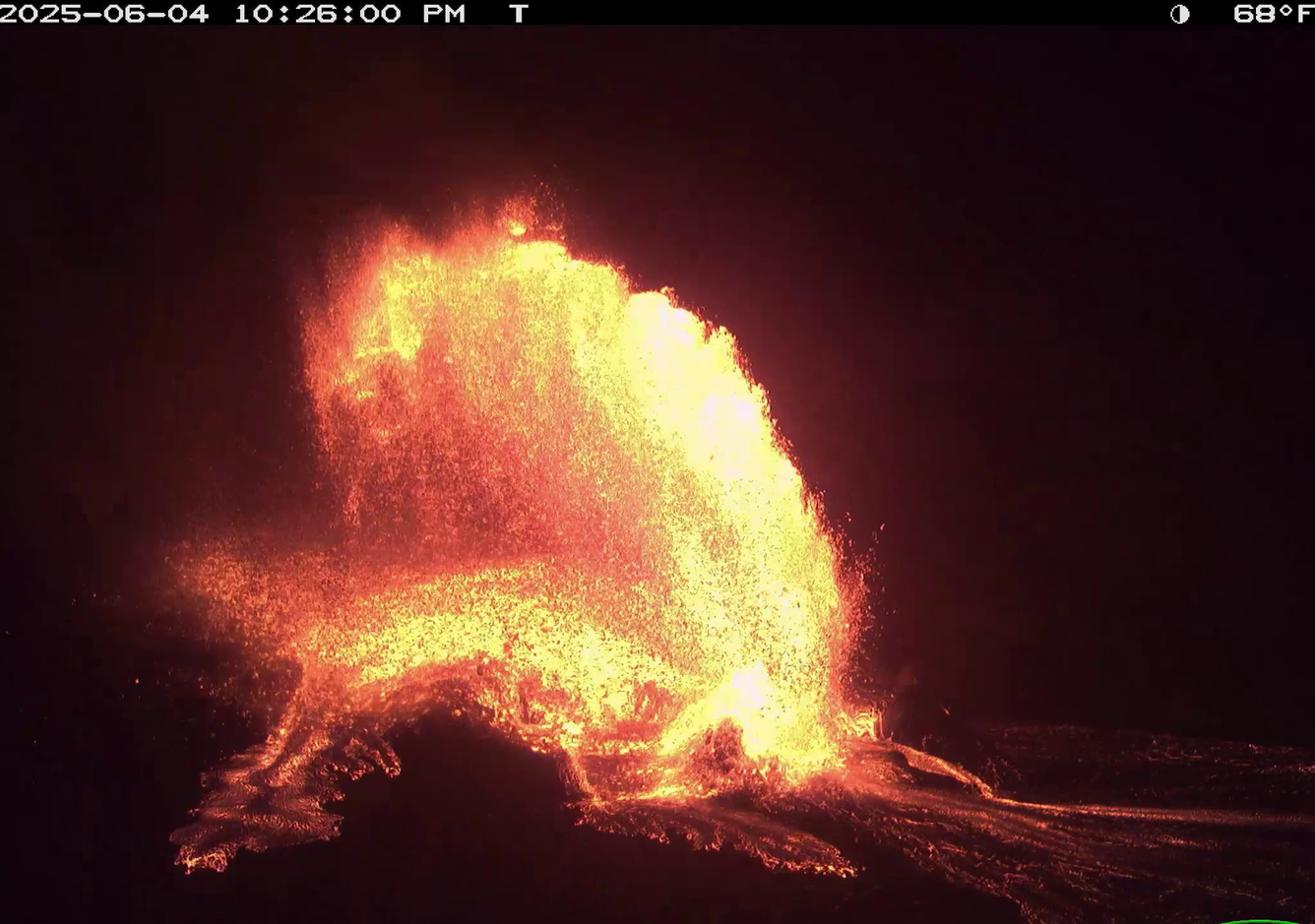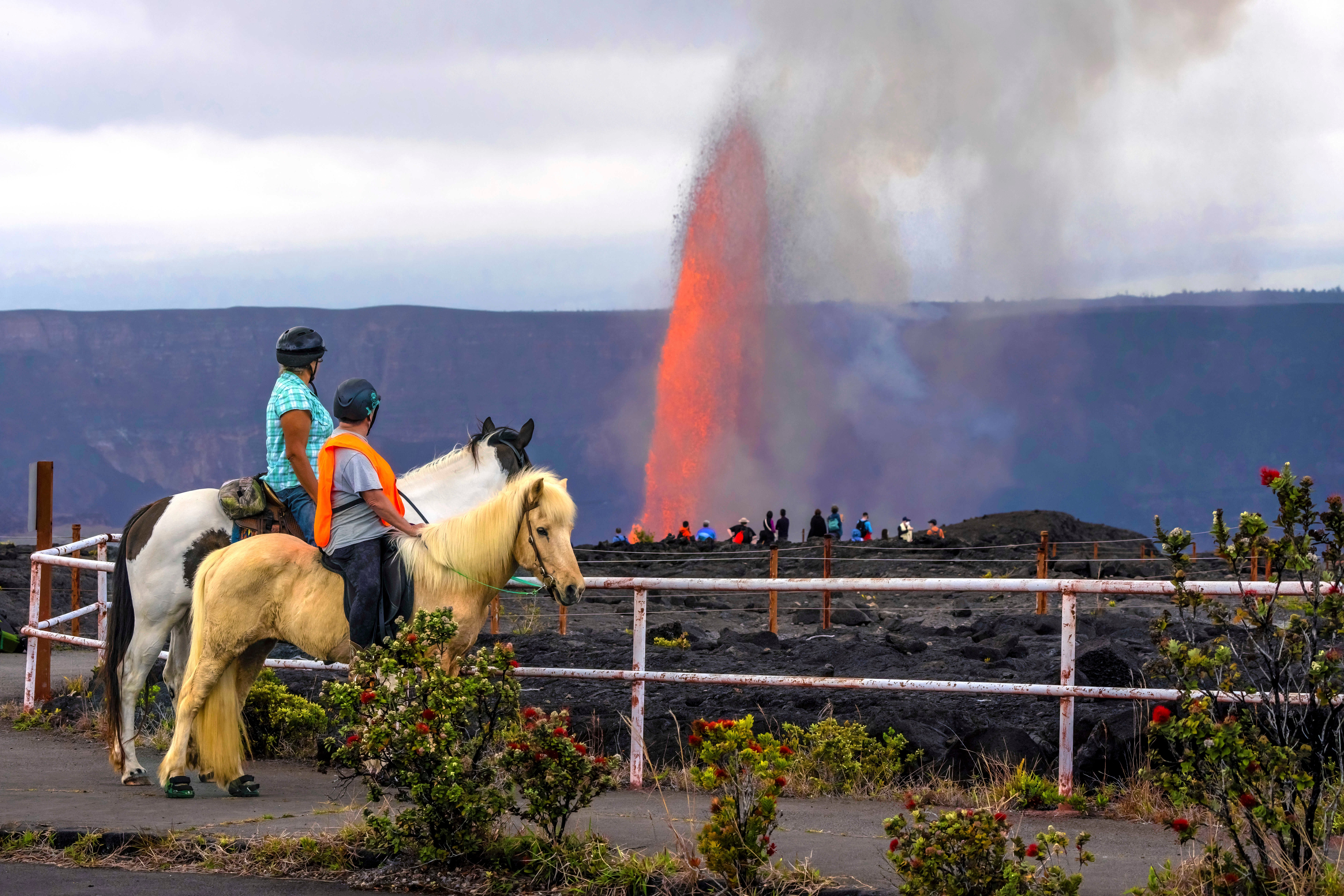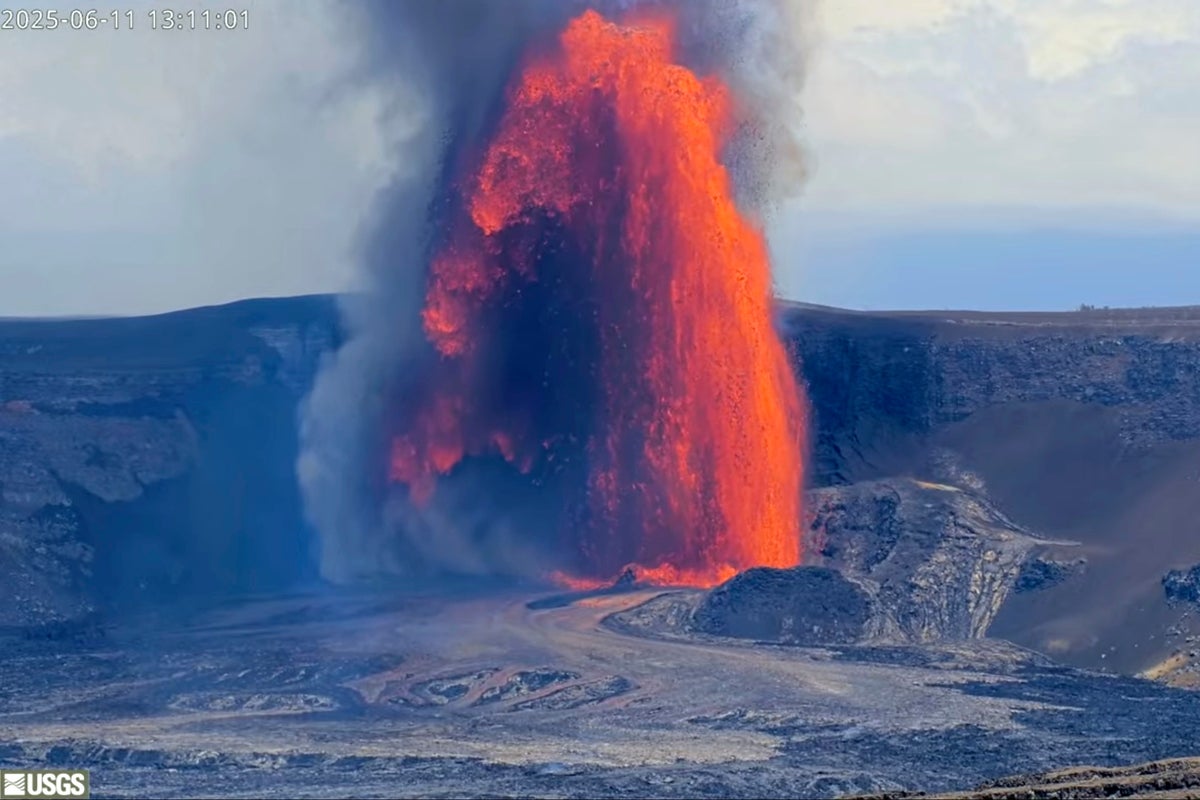Kilauea on Hawaii’s Big Island, one of the world’s most active volcanoes, is erupting again this week, spewing fountains of lava more than 330 feet in the air.
It’s the latest event in an eruption which started nearly six months ago and scientists with the U.S. Geological Survey’s Hawaiian Volcano Observatory say the fountains could climb even higher as the activity intensifies.
Impressive video from cameras focused on the volcano showed a stream of lava shooting out of the site.


According to the County of Hawaii Civil Defense, the eruption is causing the heavy traffic on the island’s Highway 11, fronting the entrance of Hawaii Volcanoes National Park.
The latest event was preceded by gas-pistoning, where gas accumulates at a lava column’s top within a vent, on Tuesday.
The observatory said this process causes the lava surface to rise or piston.
“Eventually, gas escapes as splatter/lava is erupted, and lave drains back into the vent,” the observatory wrote on its Facebook page.

These were occurring up to 10 times an hour, but increased in intensity until a small, sustained dome fountain began to feed flows to the crater floor a day later.
It is the 25th eruptive episode since the volcano on the southeastern part of the island began erupting on December 23. It has been pausing and resuming since.
Most of the eruptive episodes have spewed lava for about a day or less, with pauses between them generally lasting a few days.
No changes have been detected in the East or Southwest Rift Zones. All current and recent activity has remained within the Hawaii Volcanoes National Park, officials said.
Park visitors are reminded to stay clear of closed areas around Kilauea’s caldera rim, which remain hazardous due to unstable crater walls, rockfalls and ground cracking.
Hazards from the volcano eruption include elevated sulfur dioxide gas emissions and Pele’s hair, or strands of glassy lava that can irritate skin and eyes if handled or inhaled, officials said.


